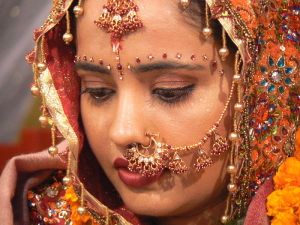Mother-in-law, ‘Saas’, ‘Mummyji’; regardless of what you call her, there’s no denying that the mum-in-law always had a vital role in the Indian family dynamics. Flip to any Indian channel on the television and you’ll come across a soap opera that replays a version of the age old story of the battle between mother-in-law and daughter-in-law. But the tide is slowly shifting and the roles are reversing in some cases. But is this role reversal any better?
Why the Indian Mummyji strikes fear in the hearts of all daughters-in-law
If any of the Indian soap operas are to be believed, Mummyji’s only life mission is to make life a living hell for her son’s wife. In the Indian culture, a girl is expected to leave her family behind and move in with her husband’s family. The family normally includes not just the husband but also his parents and possibly his siblings as well as their families. She has to change her ways and learn how to run the house the way mother-in-law wants.
Indian mothers have a strong hold over their sons. A son is expected to marry a woman his family selects and once married, the son is often caught in the middle of the daily drama between the two women. However, a son’s loyalty always remains with his mother because that’s what all sons are taught and are expected to do. What does this mean for the young bride? She cannot expect her own husband to support her, even when she is right. The only way to live peacefully is to do what Mummyji expects her to do.
So what happens when a daughter-in-law rebels? Violence is not unheard of. Usually, cases of violence are related to ‘dowry’. The bride’s family in India is expected to hand over property, jewelry or money to the groom’s family for the wedding to take place. While this age old tradition is illegal today, it continues to take place in parts throughout the country. More than 8,200 women were killed last year alone because of dowry. Greed is often the cause of violence in Indian homes but in other cases it is often the result of a power struggle. Traditionally, the bride is expected to respect and do what her ‘Saas’ tells her to do. With divorces still looked down upon in the Indian society, several young women find themselves eternally trapped in an unhappy family life where they are often mentally and even physically tortured.
The shift in the tide
India has changed radically over the last few decades. Two-thirds of all women in India are educated today; many of them are working outside to support their families. Urbanization and awareness has slowly changed the Indian family dynamics and the ‘bahu’ is slowly realising the fact that she doesn’t have to be oppressed anymore.
Women in India are more confident and assertive today. The ‘Saas-Bahu’ equation is therefore slowly changing. In many cases this change is uplifting and positive. Countless women will report that their mother-in-law is supportive, understanding and very kind; more like a mother than a monster-in-law. On the other hand, independent women are in favor of nuclear families. In 2011, a census confirmed that only 18% of households in India are still joint families. Young women prefer living away from their in-laws and this has resulted in many parents being packed up and dropped off unceremoniously to old age homes where they live a lonely and sad life until they die. In other cases where the ‘Saas’ continues to live with her son and daughter-in-law, she is treated badly, is expected to cook, clean and look after the kids while the daughter-in-law spends her day working in an office.
With better laws protecting Indian women, the historic role of Mummyji is definitely on a steady path of decline. While this has brought about a positive change in a majority of Indian households, in others it has led to the oppressed playing the role of the oppressor.
Priyanka Trivedi








